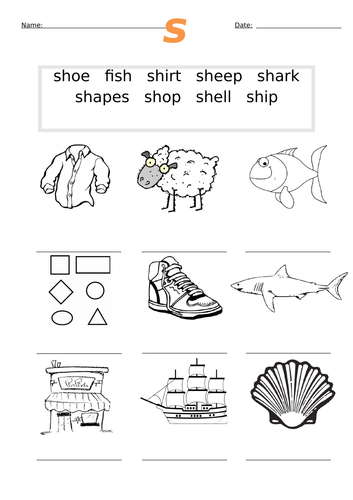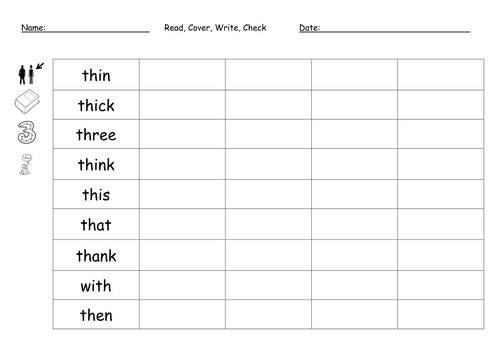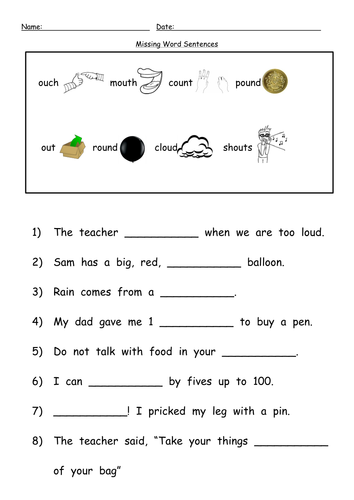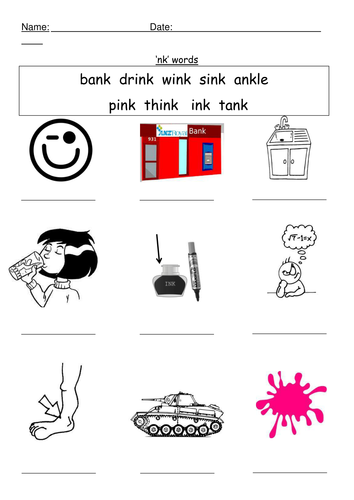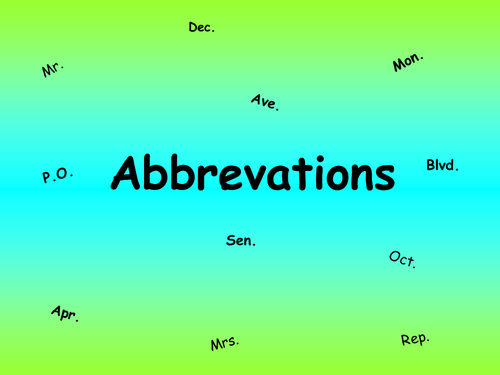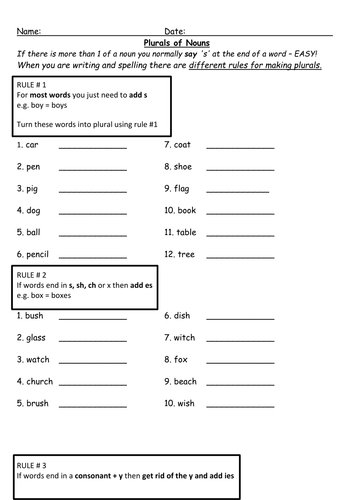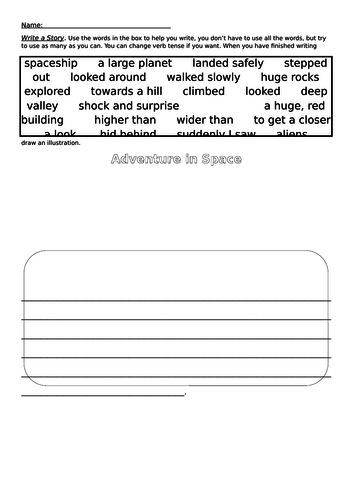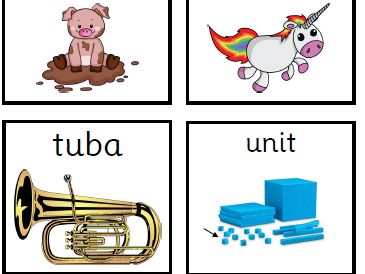401Uploads
1758k+Views
2407k+Downloads
English language arts

Goals & Steps to Achieve Posters
Posters for students to set class/school goals, with a space below each for them to list the steps they will need to take to achieve their goals.
4 versions:
3 pdf files with sassoon font: one with lines, one with numbers, and one with numbers and only 2 callout bubbles.
1 word doc with comic sans.
I will edit the documents and replace 'my' with the name of the student and print one off for each child in my class. Plus one for myself, so that I can set some personal (teaching) goals for myself.
I will also print out a large 'to achieve by xx/xx/xxxx' so that the goals are time sensitive and display this alongside the student's posters.
Also included some display headings, quotes, and stars to make a classroom display.
(star clipart is 'for reuse from clipartpanda.com)

First sh Words Worksheet sh
sh!!!! /sh/ worksheets using 'sh' words
Please see my 242 page Phonics Skills Book Phase 3 - Phase 5 resource
https://www.tes.com/teaching-resource/phonics-skills-book-phase-3-phase-5-11872855

Alternative ow Sorting
Alternative pronunciation of ow sorting cards.
ow = oa (as in arrow)
ow = ou (as in brown)
24 images (12 for each pronunciation)

th digraph worksheets
Th (voiced and unvoiced) 1st labelling worksheet. (three, thin, thick, thank, thunder, thorn, this, that, tooth) B&W clipart to label and colour.
PLUS ‘th’ cloze sentences worksheet using the same words.
PLUS read/cover/write/check th’ words.
And threw in a &‘this’ is a CVC’; and ‘that is a CVC’ writing worksheet to practice some HFW and enforce this/that spelling and use.
Please see my 242 page phonics book. https://www.tes.com/teaching-resource/phonics-comprehension-skills-book-11872855

ou digraph 1st workheet
1)Simple labelling worksheet.
2)'ou&' cloze sentences.
3)&';ou' read, cover, write, check.
All worksheets use the same words and same clip art images. Selected from: &'ou&'; words: out, shout, cloud, mouth, mouse, round, pound, count, house, flour, spout, and couch.

nk sound : Label and Cloze Sentences
'nk&' sound (bank/wink/pink) labelling worksheet. Read the words in the box and label the clipart pictures.
&';nk' words cloze sentences. Choose the best word to complete the sentences.
+ Read/Cover/Write/Check with illustrations.
Please RATE and COMMENT. Thanks.

Little oo and Long oo Digraph Worksheets
digraph /oo/.
Read and label the clip art pictures.
16 clear B&W clipart pictures of mixed long snd short oo words on 1 sheet
sentence cloze with mixed oo worksheet.
colouring sheet
read/cover/write/check
read and/or draw
See my other /oo/ resource which more clearly identifies and highlights the different long /oo/ and short /oo/ sounds. https://www.tes.com/teaching-resource/little-oo-and-long-oo-digraph-worksheets-12203447

Abbreviations PowerPoint & Worksheet
A fun introductory presentation activity about abbreviations.
Students can use mini-whiteboards (or scrap paper to make it into a quiz game) - they have to work out the common abbreviations of words or phrases (many they will know already, others they may have to work out)
Also thrown in a few challenge questions (How many metres in 1km? etc.)
Comes with an accompanying worksheet:
Full words or phrases at the bottom of the page have to be used to match the abbreviations at the top (and/or vice versa)

Alternative ch Sorting Images
Pronunciations of ‘ch’ sorting flashcards, cut, sort & stick images/words, and read, sort and write worksheet.
Alternative pronunciations of ‘ch’
‘ch’ as in ‘c’ sound (e.g. Christmas, echo) [14 images/words]
‘ch’ as in ‘sh’ sound (e.g. chef, machine) [6 images/words]
Standard pronunciation of ‘ch’
‘ch’ as in ‘ch’ sound (chick, chess) [6 images/words]
Useful for phonics flashcard games.
Supports Phase 5 of Letters and Sounds.
Free resource. Please check out my useful 242 page phonics workbook: https://www.tes.com/teaching-resource/phonics-comprehension-skills-book-11872855

Was or Were ?
Was and were are the past tenses of verb "to be".
23 easy to read, child friendly sentences with missing were or was.
1- Identify the subject of the sentence.
2- Identify whether it is a singular or plural noun.
3- Fill in the blank in the sentences using ‘was’ or ‘were’
4- Then on the line at the end write whether the noun was singular or plural.
Also thrown in a very brief cloze PowerPoint.

Plural Rules Worksheet
Old fashioned boring plural rules worksheet with 6 rules for changing nouns into their plural form and lots of example words to practice with.
Added two mixed versions in 2021 - MA and HA.
Possibly good for a homework, or to keep them quiet for 4 minutes in class?

Adverbs of Manner Mat
Adverbs of manner lace mat / table mat to support students choosing and using more adventurous adverbs of manner.
Sale

Writing Frames - Build a Story
Use these writing frames to help Key Stage 1 and lower Key Stage 2 students write stories.
8 story idea writing frames with suggested words to help students write interesting stories. Appropriate possible word choices for characters, and setting and a selection of appropriate key phrases, adjectives and verbs which writers could incorporate into their stories. All or just a few of the words can be used. Although it may seem to a teacher or tutor that the plot is predetermined by the word selection children can write a multitude of different stories by selecting fewer or more words, putting words in different orders and by adding their own extra words and information to create a different story each time. (Differentiation by outcome)
Designed to help young writers expand their vocabulary and have fun writing.
Bundle Sale

Creative Writing
Two great resources to help students develop the knowledge and skills to write creatively.
Sale

Alternative ou
Pronunciations of ‘ou’ sorting flashcards, read and colour the 4 pronunciations worksheet, and grouping and listing frame.
Alternative pronunciations of ‘ou’
‘ou’ as in ‘oo’ sound (e.g. you, group)
'ou’ as in ‘o’ sound (e.g. could, should)
'ou’ as in ‘oa’ sound (e.g. shoulder, boulder)
Standard pronunciation of ‘ou’
‘ou’ as in ‘ou’ sound (e.g. cloud, proud)
Supports Phase 5 of Letters and Sounds.
Sale

Alternative u pronunciation
2 resources to support teaching of stage 5 week 8 of Letters and Sound alternative u pronunciation.
U as in human, unicorn, tuna
U as in butter, under, sun.
24 Word cards with images to be sorted into the matching u sound groups and a read and write in the correct column worksheet.
Sale

ea Alternative Pronunciation EA
ea Alternative Pronunciation of ea.
‘ea’ as in head, feather, bread.
(and ‘ea’ as in sea, dream, meat)
Sorting flashcards with 42 images and words (21 for each pronunciation)
and
FInd, highlight, read and write in two column worksheet.
Sale

Alternative Pronunciations A
Alternative pronunciation of A worksheet and sorting cards. To support teaching during phase 5 of Letters and Sounds.
39 cards with images useful for practicing reading and sorting into groups of different pronunciation. (also uploaded 16 smaller cards (4 cards for each pronunciation) which students could use for a cut and stick in book activity or similar.
Read, sort and write worksheet.
a = ‘a’ (as in cat) a = ‘ai’ (as in alien) a = ‘ar’ (as in class) a = ‘o’ (as in wash)
Sale

Alternative Y Phonics
Pronunciations of ‘Y’ sorting flashcards, and matching read, sort and write worksheet ** and** Poster
Alternative pronunciations of ‘Y’
‘y’ as in ‘ee’ sound (e.g. baby, twenty) [10 images/words]
y’ as in ‘ie’ sound (e.g. cry, July) [10 images/words]
y’ as in ‘i’ sound (e.g. gym, crystal) [10 images/words]
Standard pronunciation of ‘y’
‘y’ as in ‘y’ sound (e.g. yam, yolk) [10 images/words]
Poster,
Flashcards,
Worksheet
Supports Phase 5 of Letters and Sounds.


